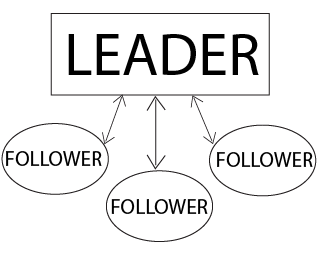Directing Class 12 extra questions and answers Free PDF Download


FAQs on CBSE Important Questions for Class 12 Business Studies Directing - 2025-26
1. What are the most important questions from Class 12 Business Studies Chapter 7 – Directing, as per CBSE 2025–26?
The most important questions include those focusing on concepts such as leadership styles, types of communication, elements of directing (motivation, supervision, leadership), and Maslow's hierarchy of needs. Case studies applying these themes and distinguishing formal and informal organizations are also frequently asked for 3-mark and 5-mark questions.
2. Explain three major conceptual traps that students should avoid while preparing Directing chapter important questions for CBSE Class 12 exams.
Students often:
- Confuse the elements of directing (e.g., mixing up supervision with motivation).
- Overlook subtle differences between types of communication networks (formal vs informal).
- Misinterpret Maslow's hierarchy levels, especially when asked for examples or practical applications.
3. How do CBSE examiners frame Higher Order Thinking Skill (HOTS) questions from the Directing chapter?
HOTS questions often require you to:
- Analyze workplace scenarios involving communication, motivation, or leadership choices.
- Evaluate outcomes of different leadership styles in given case studies.
- Propose solutions for communication barriers or motivational issues with clear justification, not just definitions.
4. In CBSE Class 12 Business Studies, how is the difference between formal and informal organization commonly tested in important questions on Directing?
The difference is typically assessed via:
- Direct comparison tables (origin, structure, authority, example).
- Application through case studies describing workplace communication or decision-making scenarios.
5. What style of leadership is considered most effective for group motivation in Directing as per CBSE board trends, and why?
The democratic/participative leadership style is often highlighted as most effective because:
- It encourages employee participation,
- Leads to higher motivation, and
- Improves cooperation and organizational harmony.
6. Identify two frequently asked 5-mark questions from Directing for Class 12, as per the latest CBSE pattern.
CBSE often asks:
- Explain the importance of directing in management with five points.
- Describe different types of leadership styles with merits and demerits, citing workplace examples.
7. What are some common exam blind spots in Directing important questions that students should address for thorough preparation?
Key blind spots are:
- Skipping definitions and practical examples for communication barriers.
- Ignoring non-financial incentives as motivational tools.
- Not analyzing leadership style implications in case studies.
8. How can students best approach case-based important questions from the Directing chapter during CBSE exams?
Use the following approach:
- Identify the core directing element (e.g., motivation, leadership) in the scenario.
- Quote relevant theory or principle.
- Apply the theory to the given situation and justify your conclusion clearly.
9. List three potential 'application-based' important questions from Class 12 Directing and outline the ideal structure for answering them.
Examples include:
- Suggest two ways a manager can overcome communication barriers in a team.
- Analyze the effect of changing incentive plans on employee motivation in a company.
- Evaluate which leadership style would suit a start-up organization best, providing reasons.
10. What key points should students highlight when answering a question on the 'importance of directing' in management for Class 12 exams?
To answer this expected question, mention:
- Initiates action towards objectives
- Integrates and coordinates resources and efforts
- Motivates employees, boosting morale
- Facilitates organizational change
- Maintains stability and equilibrium
11. In what ways can the topic of 'barriers to effective communication' be tested as important questions in CBSE Class 12 Business Studies exams?
It can be asked as:
- Direct identification and explanation of semantic, organizational, personal, or psychological barriers (3-mark or 5-mark questions).
- Short cases describing a miscommunication and requiring analysis of causes and remedies.
12. What are the essential features of motivation as an element of directing for the CBSE board exam?
Essential features include:
- Psychological phenomenon: originates from internal drives
- Results in goal-directed behavior
- Can be positive (rewards) or negative (penalties)
- Is dynamic and differs for each individual
13. How might examiners use misconceptions about 'supervision' in Directing to create challenging questions?
Examiners may:
- Frame questions that blur the line between supervision and motivation/leadership.
- Set scenarios where students must identify the correct directing element.
- Ask for the supervisor's dual role as mediator and resource allocator, often missed by students.
14. Why does the CBSE syllabus on Directing for 2025–26 emphasize both financial and non-financial motivators? (FUQ)
The syllabus emphasizes both because:
- Modern workplaces recognize that pay alone does not motivate all employees.
- Non-financial incentives like recognition, job enrichment, and status lead to sustained performance improvements.
- This aligns with management trends and the application-based focus of the current CBSE exams.
15. What mistakes should students avoid in answering questions about Maslow’s hierarchy in the Directing chapter?
Avoid:
- Incorrectly stating the order of needs
- Omitting examples specific to workplace motivation
- Forgetting to connect needs to real directing practices

























